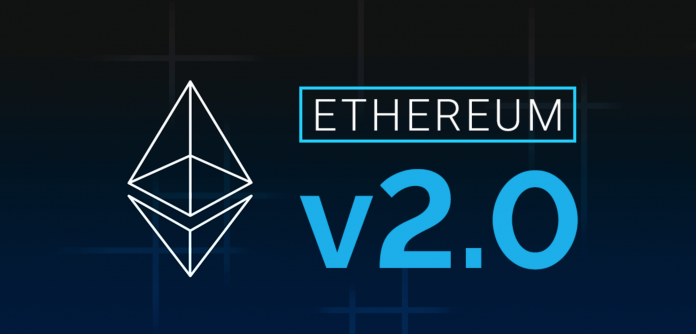Bitcoin made waves this year with a surge in retail and institutional interest in the Bitcoin Halving event which coincided with the traditional financial market crashes in the first quarter of the year as a result of the COVID-19 pandemic, which in turn drove more investors and traders to Bitcoin, away from stocks, oil, and gold. Aside from Bitcoin, Ethereum, the world’s second most-capitalized cryptocurrency, is set for some major changes as well this year.
Ethereum is known for its dynamic, flexible, and robust blockchain network and ecosystem. With a supply of more than 111 million Ether at present, more than 99 million Ethereum addresses, 2,855 decentralized applications built on the network, demand for the Ethereum network is clearly seen. Last month, daily Ethereum transactions hit 916,282 at its peak.
First launched in July 2015, the Ethereum blockchain network has gone through multiple selected feature updates in the past five years as seen below. For a greater in-depth analysis of what each update entails, take a look at Consensys’ list here.
In 2020, Ethereum is finally primed for a full update to Ethereum 2.0. Ahead of the launch of the new update, we delve deeper into this blockchain network.
Moving from Ethereum 1.0 to Ethereum 2.0
What are the main differences between Ethereum 1.0 to Ethereum 2.0? At the core of this update are two mechanisms that the current network does not have: Proof of Stake and Shard Chains (Sharding).
- The Inadequacies of Proof-of-Work Algorithm
The Ethereum network functions on an underlying mechanism – Proof of Work (PoW). According to Consensys, the PoW mechanism can be defined as such:
“Proof of Work (PoW) is a class of consensus algorithm that rewards miners who expend computational energy to solve mathematical problems to propose new blocks. With PoW, the probability of mining a block and thus receiving block rewards is a function of how much computational energy (known as hash power) a miner expends.”
The PoW mechanism is a popular implementation across several networks. Aside from Ethereum, Bitcoin and its many variants such as Bitcoin SV and Bitcoin Cash, Dash, Dogecoin and many others utilize the algorithm as it firstly helps to protect the network from DoS attacks and secondly, ensures that power to make decisions on the network does not belong to the individuals who have higher capital, but those who can mine more Ethereum blocks, for example.
Similarly, the drawbacks to this system have been widely debated on in the past five years, namely the exorbitant amounts of power required to sustain mining activity under this algorithm and more importantly, how it leaves the network open to a majority attack where 51% of Ethereum miners can collude to sway decisions and events on the network, including interfering with the processing of transactions amongst many others.
- The Challenge of Scalability
In the early days of the Ethereum network launch and after the excitement over the innovation of Smart Contracts faded slightly, users of the network found themselves hindered by several issues. The first was to do with performance and scalability – as with most blockchain networks, it works efficiently when handling transactions or activity such as block mining in smaller numbers, but when these activities multiply, the network is unable to process and handle transactions at the same speed. To put this in perspective, 45,000 card transactions are approved and processed per second by VISA, but Ethereum’s network can only process 15 transactions in the same time on average.
This is a problem that has no easy fix – the principles of the decentralized network which Smart Contracts are governed by ensures that each transaction is verified by all the nodes existent in the network. While there are some external solutions existent in the current market to increase the scaling capabilities of the public mainnet, it is still exceedingly crucial to find permanent fixes for the root of the problem on the Ethereum network itself.
- How Proof of Stake and Sharding Can Help
Proof of Stake (PoS) is also a consensus algorithm, but instead of relying on the decisions of miners, this system elects “validators” who stake amounts of ETH on the network to function as a node on the network to verify mining blocks and the factors that affect a validator’s selection can be a mix of randomization, how much ETH each validator stakes on the network and other conditions. Each validator then gets rewarded with the transaction fees involved in the block they verify. When the transition to Ethereum 2.0 happens, potential validators will be required to stake a minimum of 32 ETH on the network to be eligible for selection.
This addresses the problems of 51% attack and energy wastage as a result of mining which plague the PoW system. For one, more participants can access the Ethereum network and run nodes as the PoS makes it cheaper and more convenient to do so without the requirements of expensive ASIC mining rigs, massive facilities, and geolocation inequality where cheap electricity regions are enjoying more profitability. Moreover, validators are unlikely to be able to create a 51% majority since the element of randomization is imbued in the validator selection process.
Sharding is another frequently-used term to address Ethereum’s scalability issue and Ethereum 2.0 intends to introduce Shard Chains to allow for the single Ethereum blockchain to be split up into multiple chains for verification by multiple nodes simultaneously. Currently, the network uses only a single chain as it is both secure and incredibly transparent, but five years of limited efficiency in processing transactions have taken its toll on Ethereum users.
As we approach the day of the Ethereum 2.0 launch, this massive restructuring of one the world’s most popular blockchain networks is an event to look forward to. Plenty of Ethereum holders are getting ready for Phase 0 to be announced by purchasing more ETH and holding onto the cryptocurrency, prepared to make the 32 ETH stake or more on the network. While a launch date has not yet been confirmed, the first of the Ethereum 2.0 update was last slated for a July 2020 launch. As the team of developers behind the update work hard to test the new functionalities, here’s what to expect with the launch.
Phase 0: Proof-of-Work to Proof-of-Stake
Tentatively planned for a July launch, Ethereum 2.0 upgrades will commence officially with Phase 0 which will see the launch of its beacon chain. Under this phase, the PoS algorithm will go live and participants who wish to become validators can begin to stake the minimum of 32 ETH and register. Prior to this, potential validators will have to create ETH 2.0 keys via a deposit contract which will be released on the ETH2 Launchpad. Participants who are unable or unwilling to stake the full amount of 32 ETH can decide to form a Staking Pool with others where each member of the pool contributes a portion of the 32 ETH. Correspondingly, the rewards gained by becoming a validator and successfully verifying a block will be distributed proportionally within the pool.
Vitalik Buterin, the founder and creator of Ethereum, has been vocal on his Twitter account in recent weeks on the progress of Ethereum 2.0 updates as tests have been carried out via several platforms. Lauding the success of Ethereum’s layer 2 scalability solution, Buterin seems positive that Phase 0 will be launched as planned. However, StarkWare, which is one of the firms that tested the new solution, was of the opinion that it is far from ready.
Phase 1: Introduction of Shard Chains
The second defining feature upgrade for Ethereum 2.0, shard chains will come into play in this phase after the PoS system is fully functional in Phase 0. Ethereum developers intend to implement a total of 64 shard chains to run in place of the single chain existent on Ethereum 1.0. As mentioned above, this phase is meant to increase scalability and efficiency on the Ethereum network, improving the network’s performance as a whole.
Phase 1.5: Integrating Ethereum 1.0 with Ethereum 2.0
What happens to Ethereum’s original blockchain when Ethereum 2.0 is launched? This phase is reserved for the integration of the Ethereum 1.0 chain on the Ethereum 2.0 network as developers port the original chain over to function as one of Ethereum 2.0’s 64 shard chains. The PoW system will run smoothly on the PoS chain with no data transfers necessary, but the PoW mechanism will become obsolete and redundant as PoS becomes the only underlying algorithm driving the new network forward.
Phase 2 & Beyond
Not much has been detailed for these two phases at present. However, the launch of Ethereum 2.0 will be officially complete only when Phase 2 is reached. Some features for improvement have been outlined, such as “adding ether accounts, enabling transfers and withdrawals, implementing cross-shard transfers and contract calls and building execution environments so that scalable applications can be built on top of Ethereum 2.0”.
While there is no telling how long it will take for this huge undertaking to be completed, the crypto community has been anticipating the introduction of Ethereum 2.0 for years and the possibilities of enhanced innovation with this upgrade are endless. If it proves to be an efficacious solution to the scalability issue, Ethereum 2.0 may truly end up changing the world.


